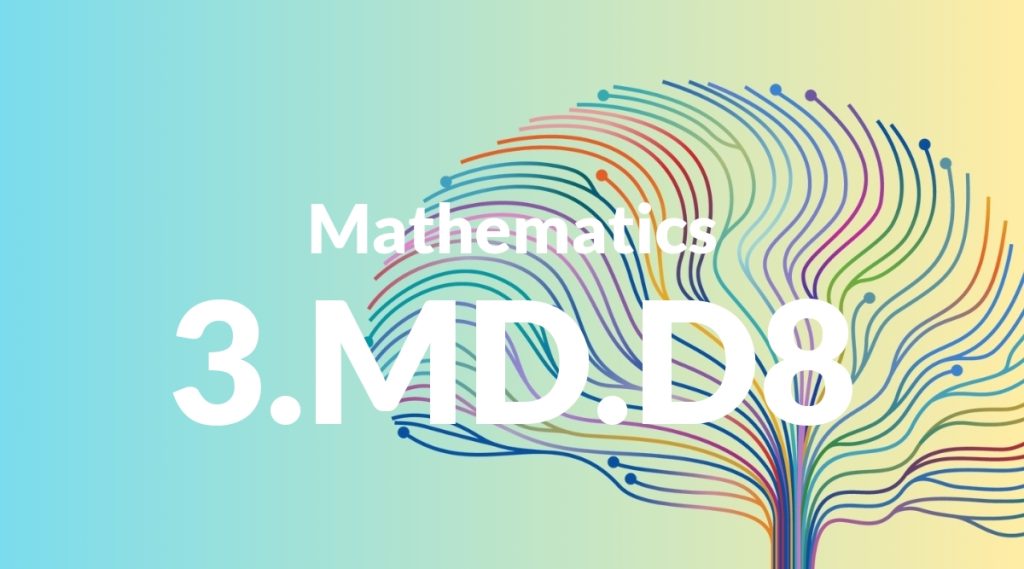Standard: 3.MD.D8 – Solve real world and mathematical problems involving perimeters of polygons, including finding the perimeter given the side lengths, finding an unknown side length, and exhibiting rectangles with the same perimeter and different areas or with the same area and different perimeters.
Grade level: Grade 3
Subject: Mathematics
Domain: Measurement & Data
Teacher Overview
This standard focuses on solving problems involving the perimeter of polygons, which is a crucial skill in understanding geometric properties and measurements. Mastery of this standard helps students apply mathematical concepts to real-world situations and prepares them for more advanced topics in geometry. Ensure students have a solid grasp of basic arithmetic operations and are familiar with measuring lengths. They should also understand the properties of simple geometric shapes.
Mastering this standard will enable students to tackle more complex geometric problems involving area and volume, and enhance their ability to apply mathematical reasoning in various real-world contexts.
Common Misconception 1
Some students may believe that if two shapes have the same perimeter, they must also have the same area. This misconception arises because students often conflate the concepts of perimeter and area.
Intervention 1
To address this misconception, use hands-on activities where students create different shapes with the same perimeter using string or tiles. Discuss and compare the areas of these shapes to highlight the difference.
Common Misconception 2
Another common misconception is confusing perimeter with area. Students may incorrectly calculate the perimeter by adding up the areas of individual parts of a shape.
Intervention 2
Clarify the distinction by providing visual aids and practice problems that emphasize calculating the perimeter as the total distance around a shape. Reinforce this through exercises that separate area calculations from perimeter calculations.
Prerequisite Knowledge
Students should understand basic addition and subtraction, be familiar with the concept of length, and have some experience with simple geometric shapes.
Subsequent Knowledge
After mastering this standard, students will be able to apply their understanding of perimeter to more complex shapes and real-world scenarios, and they will be prepared to explore area and volume in greater depth.
Instructional Activities
- Create different polygons using string and measure their perimeters.
- Design a small park on grid paper, ensuring the perimeter meets specific requirements.
- Compare and contrast rectangles with the same perimeter but different areas using graph paper.
- Solve word problems that involve finding unknown side lengths of polygons.




